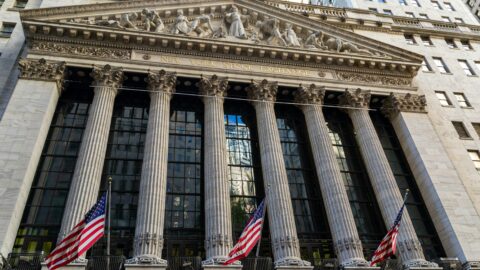The unexpectedly high inflation rates draw even wider circles. In the meantime, many classes of securities are showing significant price losses. The question is whether the negative environment is already being reflected by market prices.
High inflation
The innermost circle symbolizes the massive loss of purchasing power triggered by high inflation. In Europe in particular, high energy prices may have already triggered a recession. Numerous economic indicators have been falling for months. At the global level, the levels of the indicators still point to growth, albeit at a low level. However, the falling trend (momentum) is worrying.
Key interest rate hikes
The next circle represents the rapid and broad-based rate hikes to restrictive levels. The rapid and synchronous rate hikes are already putting pressure on the financial system and the economy. However, more and more central banks are signaling beyond this that they want to raise their respective key interest rates to restrictive levels. In addition, the US central bank is making it clear that it intends to keep key interest rates at a higher level “for some time.” The higher consumer and producer prices and the tightening of the monetary policy environment mean a higher cost burden for companies and consumers. Added to this is the strong strengthening of the US dollar this year, which has made servicing debt in US dollars more expensive.
Tightening of the financial environment
In the third circle, there is a tightening of the financial environment. Many securities markets are showing price losses due to the significant increase in expectations for future key interest rates. The higher interest rates reduce the current value of future cash flows (the present value). In addition, higher interest rates are weighing on the most interest-rate-sensitive segment of the economy: the real estate market.
Liquidity bottleneck
The fourth circle describes liquidity strains. The latter has been added as a driving factor. The sharp decline in asset prices leads to losses for asset holders. To compensate for the losses, market participants may be forced to sell (liquidate) some assets to create liquidity. This process is amplified when assets with price losses are leveraged. Last week, margin calls (higher cash as collateral for price losses) led to strong selling pressure on UK government bonds as UK pension funds faced large price losses due to interest rate increases. In line with this, indicators of future market fluctuations (the volatility indicators) have risen significantly for bonds, exchange rates and equities. Some risk indicators are already above 2008 levels: The difference (swap spread) between the interest rate at which money is swaped with banks and the credit-safe government bonds (German Bunds) signals stress in the system at just under one percentage point. The long-term average is 0.37 percentage points.
Recession risks
Last but not least, the fifth circle comprises the rising risks of a global recession. The more circles that affect economic activity, the more pronounced the recession would be. Here, the key question for the stock markets is to what extent a recession-related decline in earnings is already priced in. If a global recession does indeed occur, it is by far the best forecast. Working assumption: A pronounced recession is unlikely to be reflected by market prices, while a mild one is.
Too pessimistic and falling inflation
On the positive side, two factors stand out. First, reporting is already very negative. This is an indication that an exaggeration of sentiment could take place on the negative side. This would mean that numerous asset classes would already be cheap now or soon. Second, significantly falling monthly inflation rates would make it easier for central banks to cut key interest rates. This could even trigger a mini-boom in many asset markets.
For a glossary of technical terms, please visit this link: Fund Glossary | Erste Asset Management
Legal note:
Prognoses are no reliable indicator for future performance.
Legal disclaimer
This document is an advertisement. Unless indicated otherwise, source: Erste Asset Management GmbH. The language of communication of the sales offices is German and the languages of communication of the Management Company also include English.
The prospectus for UCITS funds (including any amendments) is prepared and published in accordance with the provisions of the InvFG 2011 as amended. Information for Investors pursuant to § 21 AIFMG is prepared for the alternative investment funds (AIF) administered by Erste Asset Management GmbH pursuant to the provisions of the AIFMG in conjunction with the InvFG 2011.
The currently valid versions of the prospectus, the Information for Investors pursuant to § 21 AIFMG, and the key information document can be found on the website www.erste-am.com under “Mandatory publications” and can be obtained free of charge by interested investors at the offices of the Management Company and at the offices of the depositary bank. The exact date of the most recent publication of the prospectus, the languages in which the fund prospectus or the Information for Investors pursuant to Art 21 AIFMG and the key information document are available, and any other locations where the documents can be obtained are indicated on the website www.erste-am.com. A summary of the investor rights is available in German and English on the website www.erste-am.com/investor-rights and can also be obtained from the Management Company.
The Management Company can decide to suspend the provisions it has taken for the sale of unit certificates in other countries in accordance with the regulatory requirements.
Note: You are about to purchase a product that may be difficult to understand. We recommend that you read the indicated fund documents before making an investment decision. In addition to the locations listed above, you can obtain these documents free of charge at the offices of the referring Sparkassen bank and the offices of Erste Bank der oesterreichischen Sparkassen AG. You can also access these documents electronically at www.erste-am.com.
Our analyses and conclusions are general in nature and do not take into account the individual characteristics of our investors in terms of earnings, taxation, experience and knowledge, investment objective, financial position, capacity for loss, and risk tolerance. Past performance is not a reliable indicator of the future performance of a fund.
Please note: Investments in securities entail risks in addition to the opportunities presented here. The value of units and their earnings can rise and fall. Changes in exchange rates can also have a positive or negative effect on the value of an investment. For this reason, you may receive less than your originally invested amount when you redeem your units. Persons who are interested in purchasing units in investment funds are advised to read the current fund prospectus(es) and the Information for Investors pursuant to § 21 AIFMG, especially the risk notices they contain, before making an investment decision. If the fund currency is different than the investor’s home currency, changes in the relevant exchange rate can positively or negatively influence the value of the investment and the amount of the costs associated with the fund in the home currency.
We are not permitted to directly or indirectly offer, sell, transfer, or deliver this financial product to natural or legal persons whose place of residence or domicile is located in a country where this is legally prohibited. In this case, we may not provide any product information, either.
Please consult the corresponding information in the fund prospectus and the Information for Investors pursuant to § 21 AIFMG for restrictions on the sale of the fund to American or Russian citizens.
It is expressly noted that this communication does not provide any investment recommendations, but only expresses our current market assessment. Thus, this communication is not a substitute for investment advice.
This document does not represent a sales activity of the Management Company and therefore may not be construed as an offer for the purchase or sale of financial or investment instruments.
Erste Asset Management GmbH is affiliated with the Erste Bank and austrian Sparkassen banks.
Please also read the “Information about us and our securities services” published by your bank.



